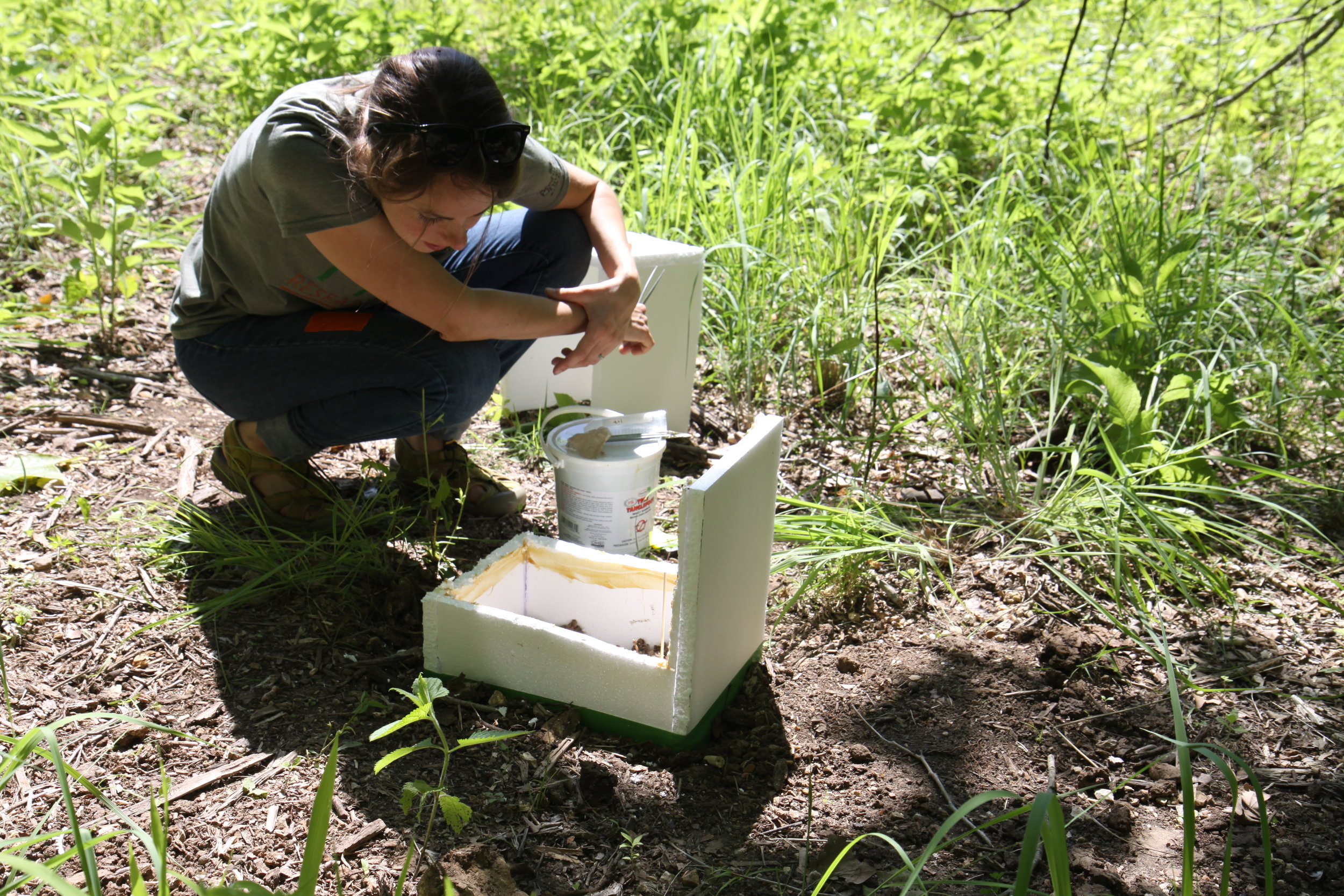Solny Adalsteinsson, Kim Medley, Beth Biro, Katie Westby
Prescribed fire is potentially an effective management tool to reduce free living tick populations and associated risks of tick-borne diseases. Tick populations may respond differently to prescribed fire depending on habitat, seasonal timing, and frequency. Furthermore, fire likely has varying effects on different tick and vertebrate host species, with implications for determining overall tick-borne disease risk. In this long-term experimental study, we aim to characterize how tick populations are affected by fire and to disentangle mechanisms underlying tick population and pathogen dynamics. Using a combination of field experiments and mathematical modeling approaches, we will gain a holistic understanding of how prescribed fire affects tick-borne disease ecology through its many components.
1. How does prescribed fire affect the abundance of host-seeking lone star ticks in oak-hickory forests? While burning has been shown to reduce tick populations in the short-term, within six months to one-year post-burn tick populations often rebound to pre-burn levels or exceed pre-burn levels (Hoch et al. 1972, Jacobson and Hurst 1979, Drew et al. 1985, Mather et al. 1993, Davidson et al. 1994,Stafford et al. 1998, Cully 1999, Allan 2009). Designing effective burn regimes requires an understanding of the mechanisms behind tick reductions and recoveries following burns. We are using a large carbon dioxide-baited trapping array spread across 16 paired burned and unburned plots to estimate lone star tick (Amblyomma americanum) larval, nymphal, and adult abundance, before and after prescribed fire.
2. Do habitat changes resulting from prescribed fire confound lone star tick population estimates? It has been assumed, but rarely tested empirically (Hoch et al. 1972), that burns reduce tick populations through direct mortality. However, tick population estimates rely on ticks exhibiting a specific behavior (i.e. host-seeking, or “questing”), which is likely to be directly and indirectly influenced by burning. Therefore, measures of tick population responses to fire may be confounded by behavioral responses, which have not been studied. Two hypotheses for behavioral mechanisms can be proposed to explain observed tick population responses to prescribed burns: 1. Prescribed fire alters tick questing behavior due to loss of habitat structure; and 2. Prescribed fire alters tick questing behavior due to reduction in microclimate suitability. Standard collection methods used for estimating tick density assume that the number of ticks questing is proportional to tick population density; when comparing across experimental groups, these proportions are assumed to be equal. However, tick questing behavior is determined by intrinsic and extrinsic factors such as lipid reserves, microclimate, and habitat structure (Randolph and Storey 1999, Perret 2003, Randolph 2009), all of which may be altered through prescribed burning. We expect that ticks in burned habitats -characterized by reduced habitat structure, greater daily variation in temperature, and greater vapor pressure deficit -will be relatively less active questing than ticks in control habitats. We also predict that pathogen infection status will interact with the effects of burning to alter questing behavior.
In collaboration with our colleagues Tony Dell and Carl Cloyed at the National Great Rivers Research and Education Center, we are investigating tick behavioral responses to burned habitat with field and laboratory mesocosms.
3. How does tick loading on avian hosts compare to populations of free-living ticks in burned and unburned forest? Birds play an important role in the enzootic transmission cycles of tick-borne pathogens as either dilution or amplification hosts. Understanding how prescribed burns affect the prevalence of tick-borne pathogens requires information on how burns influence interactions between hosts and ticks. In this study, we are comparing tick burdens on birds in burned versus control (unburned) plots. We will study how both bird and tick community structure varies with burning, and compare our results with those from trapping efforts aimed at collecting free-living ticks. We expect to find a different diversity of tick species parasitizing birds -compared to those captured in carbon dioxide traps-, and these ticks may be more or less susceptible to the effects of prescribed fire.
4. Do white-tailed deer habitat use patterns shift in response to prescribed fire? White-tailed deer (Odocoileus virginianus) are important hosts for tick reproduction and survival, and their habitat use has been shown to be influenced by burning regimes. Prescribed fire stimulates fresh vegetative growth in forests, which is favoredby white-tailed deer for browsing. White-tailed deer’s preferential use of recently burned areas has been identified as a mechanism promoting tick population recovery; deer help ticks recolonize burned habitats by transporting gravid female ticks. We are studying deer habitat use patterns after fire by conducting fecal pellet counts in transects across 16 burned and unburned plots. We will survey throughout different seasons to understand how deer activity patterns vary, with implications for abundance of different tick life stages through time.





